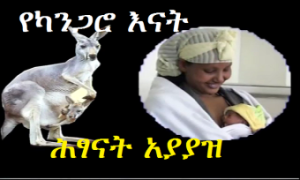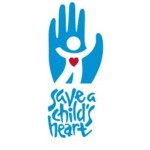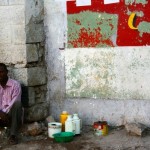 Last month Jennifer James traveled to Ethiopia to observe Save the Children’s work with frontline health workers. She, along with three US-based pediatric and obstetric nurses, visited health facilities in Addis Ababa and Hawassa.
Last month Jennifer James traveled to Ethiopia to observe Save the Children’s work with frontline health workers. She, along with three US-based pediatric and obstetric nurses, visited health facilities in Addis Ababa and Hawassa.
Throughout my brief travels in Ethiopia with Save the Children last month I was heartened to see that both hospitals we visited, Black Lion hospital in Addis Ababa and Bishoftu hospital in Debre Zeyit, had a dedicated “Kangaroo Mother Care” (the practice of wrapping ones’ baby to ones’ bare chest and breastfeeding exclusively) unit. Black Lion hospital, one of the leading in Ethiopia, boasted a larger unit than the other, but not by much. It had a maximum capacity of four mothers, each of whom occupied a bed in a narrow, small room with a single window. Bishoftu hospital accommodated two.
In each unit at both hospitals each tiny baby was wrapped closely on his or her mother’s body, not making a sound, eyes closed, resting peacefully. We saw hope in each of the mothers’ eyes, knowing they are doing the best they can to keep their babies alive.
Kangaroo Mother Care has been proven to be an effective method to improve the chance of survival for the 15 million babies who are born too soon each year. Not only does it promote skin-to-skin contact and exclusive breastfeeding, it also prevents hypothermia and reduces infections. In fact, according to Save the Children, this type of care reduces newborn deaths by more than 50 percent.
In middle and poor-income countries Kangaroo Mother Care is keeping babies alive, especially where resources for premature babies are scarce.
One mother in the Addis Kangaroo Mother Care unit, however, the doctor told us, was “from the country”. Her baby was wrapped tightly in a blanket and was simply lying beside her. When we came in the nurses were tending to her baby. I didn’t ask details about why that mother in particular wasn’t practicing Kangaroo Mother Care. Judging from the traditional tattoos along her jawline and knowing she was from a rural area, it likely went against her tradition of allowing others to see her body. While Kangaroo Mother Care works and is WHO recommended for premature and low birth-rate babies, there are cultural and educational hurdles that stand in the way of it being more widely accepted.
Although we saw Kangaroo Mother Care practiced at these health facilities, it is far from ubiquitous across the entire country. In local settings, frontline health workers are taking on the task of teaching women kangaroo mother care at home in order to keep their babies alive who are born prematurely. This is important in Ethiopia as over 90 percent of women deliver their babies at home.
The five babies we saw were clearly benefitting from this care — though there is no way of knowing whether they survived, of course. The probability that they will survive, however, significantly increases when something as simple as being wrapped and held close to his or her mother’s body occurs.
JENNIFER JAMES




























Join Conversations